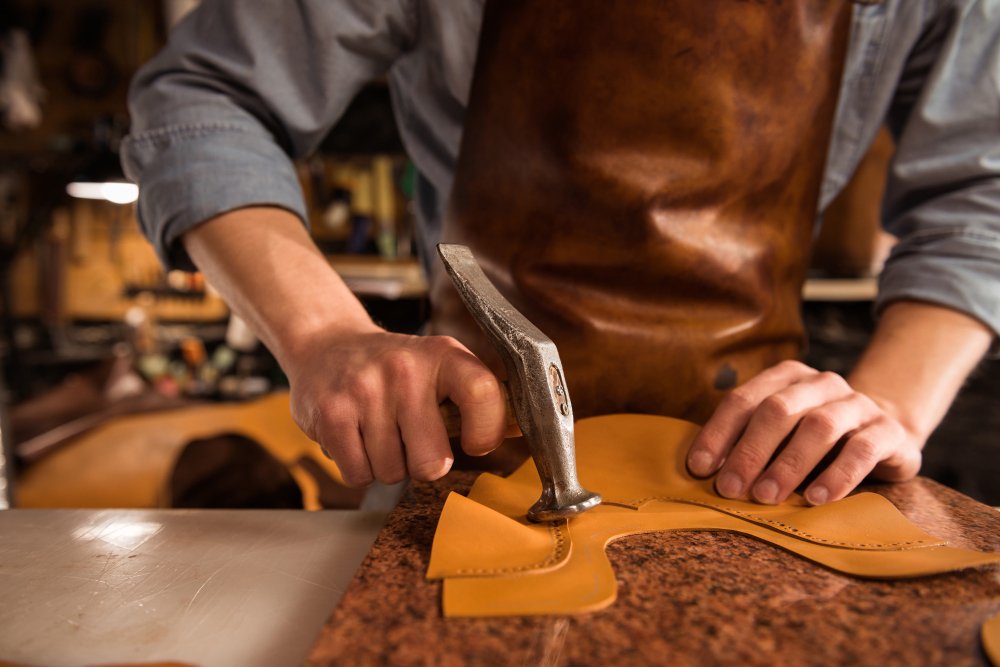Leather making is an age-old craft that combines skill, creativity, and a deep appreciation for quality materials. In a leather making workshop, participants have the opportunity to learn the intricacies of this art form, from selecting the finest hides to crafting beautiful, durable items. This article delves into the world of leather making workshops, exploring the techniques, tools, and benefits of participating in such an enriching experience.
The Art of Leather Making
What is Leather Making?
Leather making involves transforming animal hides into a supple, durable material that can be used for a variety of products. This process includes several steps, such as tanning, dyeing, cutting, and stitching, each requiring a high level of skill and precision. Leather is prized for its strength, flexibility, and timeless appeal, making it a popular choice for items like bags, belts, shoes, and accessories.
History and Tradition
Leather making has been practiced for thousands of years, with techniques passed down through generations. Ancient civilizations, including the Egyptians, Greeks, and Romans, used leather for clothing, footwear, and armor. Over time, the craft has evolved, incorporating new methods and tools while maintaining its traditional roots.
What to Expect in a Leather Making Workshop
1. Introduction to Leather Types
Participants begin by learning about different types of leather, such as full-grain, top-grain, and split leather. Understanding the qualities and uses of each type is essential for selecting the right material for specific projects.
2. Tools of the Trade
A comprehensive leather making workshop introduces participants to the essential tools used in the craft. These tools include:
- Cutting Tools: Knives, rotary cutters, and shears for precise cutting of leather.
- Stitching Tools: Needles, awls, and thread for hand-stitching and machine stitching.
- Burnishing Tools: Edge burnishers and slickers for finishing edges.
- Dyeing and Finishing Tools: Brushes, sponges, and applicators for applying dyes and finishes.
3. Basic Techniques
The workshop covers fundamental techniques such as:
- Cutting: Learning how to measure and cut leather accurately.
- Stitching: Mastering both hand-stitching and machine-stitching methods.
- Edge Finishing: Techniques for burnishing and sealing edges.
- Dyeing and Finishing: Applying dyes, oils, and finishes to enhance the leather’s appearance and durability.
4. Creating Your First Project
Participants typically start with a simple project, such as a wallet, belt, or keychain. This hands-on experience allows them to apply the techniques learned and gain confidence in their skills. Instructors provide guidance and support throughout the process, ensuring that each participant creates a high-quality item.
Advanced Techniques and Projects
1. Tooling and Embossing
Advanced workshops often cover tooling and embossing techniques, which involve creating intricate designs and patterns on leather. Participants learn how to use stamping tools, carving knives, and embossing plates to add decorative elements to their projects.
2. Lacing and Braiding
Lacing and braiding techniques are used to create decorative and functional elements on leather items. Workshops teach participants various lacing patterns, such as the whipstitch and double-loop, as well as different braiding methods.
3. Bag and Accessory Making
For those interested in more complex projects, advanced workshops offer instruction on making bags, purses, and other accessories. These sessions cover pattern making, assembly techniques, and adding hardware like zippers, buckles, and rivets.
4. Customization and Personalization
Participants learn how to customize and personalize their leather creations. Techniques such as monogramming, stamping, and inlay work allow for unique, one-of-a-kind items.
Benefits of Attending a Leather-Making Workshop
1. Skill Development
Leather making workshops provide an excellent opportunity to develop new skills and hone existing ones. Participants gain hands-on experience and learn techniques that can be applied to a wide range of projects.
2. Creative Expression
Leather crafting allows for a high degree of creative expression. Participants can experiment with different designs, colors, and techniques to create unique items that reflect their personal style.
3. Therapeutic Experience
The process of working with leather can be therapeutic and meditative. The focus and attention to detail required in leather crafting can help reduce stress and promote mindfulness.
4. Quality and Sustainability
Learning to make leather items ensures that participants understand the value of quality craftsmanship. By creating durable, long-lasting products, they contribute to a more sustainable and less disposable culture.
5. Community and Networking
Workshops provide a social environment where participants can connect with like-minded individuals who share an interest in leather crafting. These connections can lead to collaborations, friendships, and a supportive community of artisans.
Conclusion
A leather-making workshop is a rewarding experience that offers a deep dive into the art and craft of working with leather. From learning basic techniques to mastering advanced skills, participants gain valuable knowledge and hands-on experience. Whether you’re looking to develop a new hobby, create personalized gifts, or pursue a career in leather crafting, a workshop provides the perfect opportunity to explore this timeless craft.




recommended dosage of hgh for bodybuilding
References:
hgh results before and After, hedge.fachschaft.informatik.uni-kl.de,
dianabol only cycle reddit
References:
test and dianabol cycle